After camping for the first time forever in my life (I've never camped before 😅 ), and at the foot of the great Machu Picchu, the next morning we went back up to to Machu Picchu with our guide to explore this fascinating piece of history in detail. We walked a short distance back into nearby Aguas Calientes and queued up with all the other tourists who arrived by train to take the bus ride. The bus ride takes about 25 minutes zig zagging 6km up the mountain.
在馬丘比丘的腳下經歷我人生第一次野外露營之後(我從來沒有露營過😅),第二天早上,導遊帶我們再次回到馬丘比丘,詳細探索這個迷人的歷史古蹟。我們走了一小段路,回到附近的小鎮阿瓜斯卡連特斯(Aguas Calientes),和其他乘坐火車來的乘客排隊等候乘坐公車。從之字路慢慢上山的路程有6公里,大約需要25分鐘。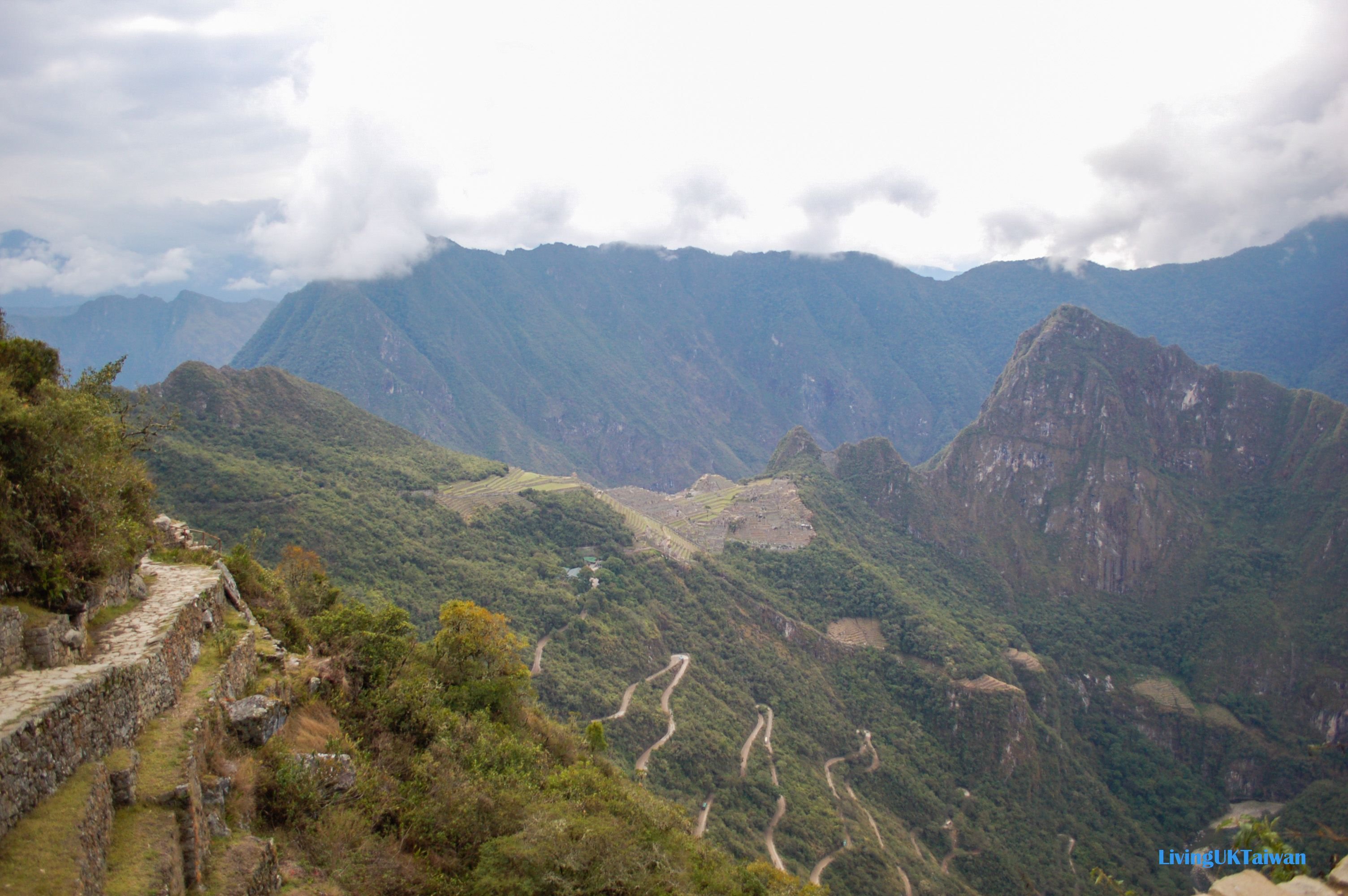
Historians and archaeologists believes that Machu Picchu was built some time around the 14th century at the height of the Incan Empire. The Incan's built many of these sites high up in the mountain retreating further away from the Spanish who were invading Peru around that time. The Spaniards were not accustomed to the mountainous regions so they didn't get as far up the mountain as Machu Picchu and the other Incan sites we passed by during our trek. Therefore these gems were fortunately left undestroyed by the Spaniards allowing us to visit after all these years.
根據歷史學家和考古學家研究,馬丘比丘建於印加帝國14世紀的高峰期。當時秘魯被西班牙人入侵,印加族往山上逃,建立了不少類似的社區。西班牙人不善於山區作戰,所以他們沒有攻打到這裡,馬丘比丘和我們在路上經過的其他印加地點,因而得以保存,讓我們今天可以到訪這些偉大的古蹟。
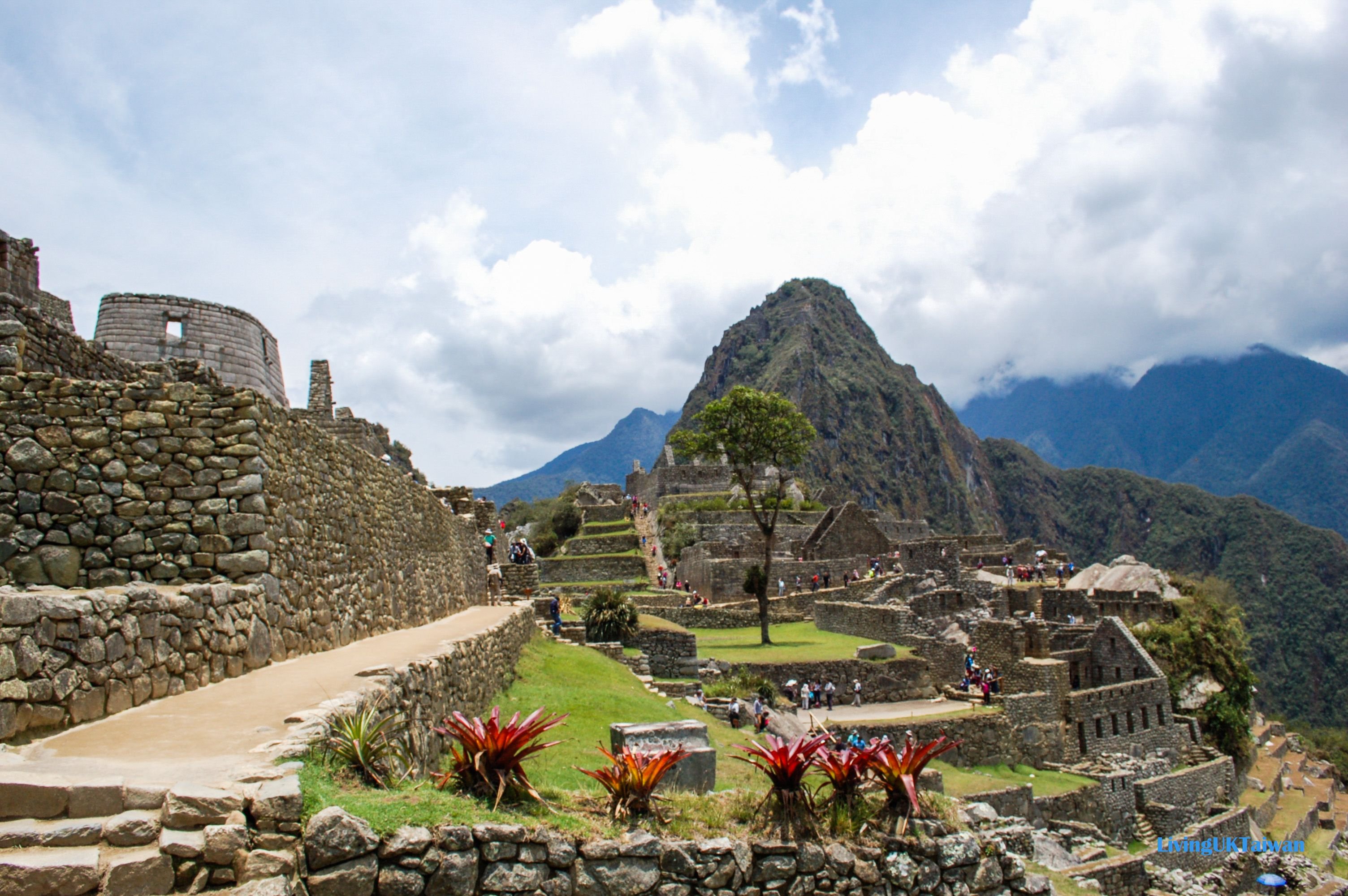
Machu Picchu was was declared a UNESCO World Heritage site in 1983, and received 1.4 million visitors in 2016, peaking to 5000 people per day in the summer months. This is double the visitors recommended by UNESCO and puts immense pressure on this historical site. UNESCO threatened to add Machu Picchu to the list of world heritage sites in danger unless the Peruvian government started to control the flow of tourists. In July 2017, the Peruvian government implemented a new entry system. There will be two entry sessions a day, a morning one that starts at 0600 to noon limited to 3267 visitors, and an afternoon one that ends at 1730 limited to 2673 entrants. Although the new system distributes the visitors more evenly, in reality it actually increases the total number of visitors to nearly 6000 per day!
自1911年被發現後,馬丘比丘一直都是秘魯的熱門旅遊點,於1983年更被聯合國列為世界文化遺產。在2016年就有140萬名遊客到訪馬丘比丘,而在夏季每天人次更高達5000人。其實這比聯合國建議的遊客數量足足多一倍,為這個歷史遺址帶來了巨大的壓力。聯合國擔心長此下去,狀況會越來越嚴重,要求秘魯政府開始控制遊客流量,否則將把馬丘比丘列入頻危世界遺產名錄。2017年7月,秘魯政府實行了新的人流管制。每天分兩次入場,從清晨06:00至中午有3267個名額,另外下午入場限額為2673人次。雖然新系統是限制了同時到訪的人數,但實際上每天遊客總數卻增加到近6000人!
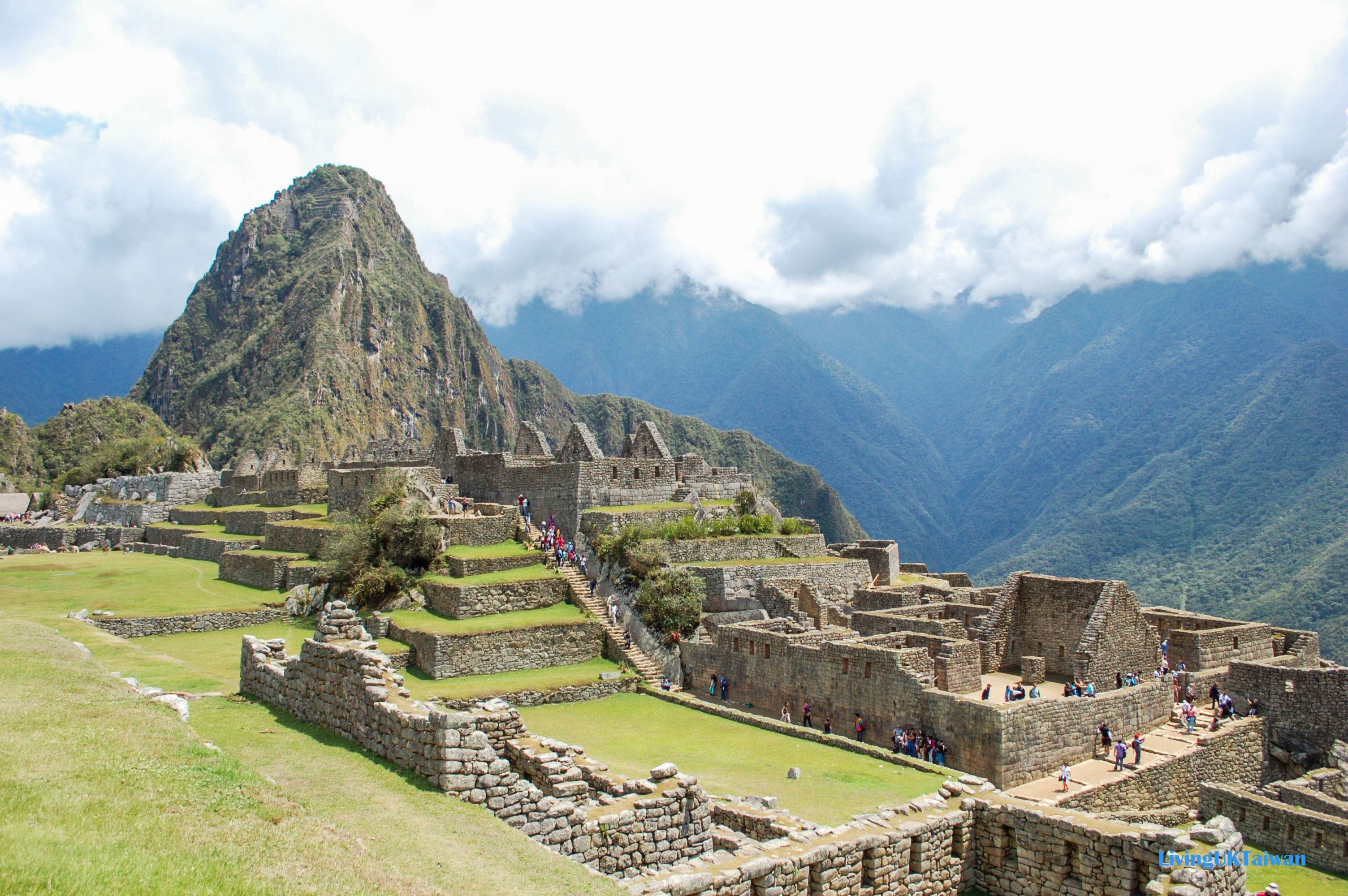
Machu Picchu is at 2430m ASL, and sits on a ridge between two two mountains. It is 32592 hectares big, to put it in perspective, one international rugby field is slightly over 1 hectare.
馬丘比丘在海拔2430米高,坐落在兩座山之間的山脊上。它的總面積有32592公頃,用一個譬喻,天安門廣場有44公頃,馬丘比丘就相等於740個天安門廣場那麼大!
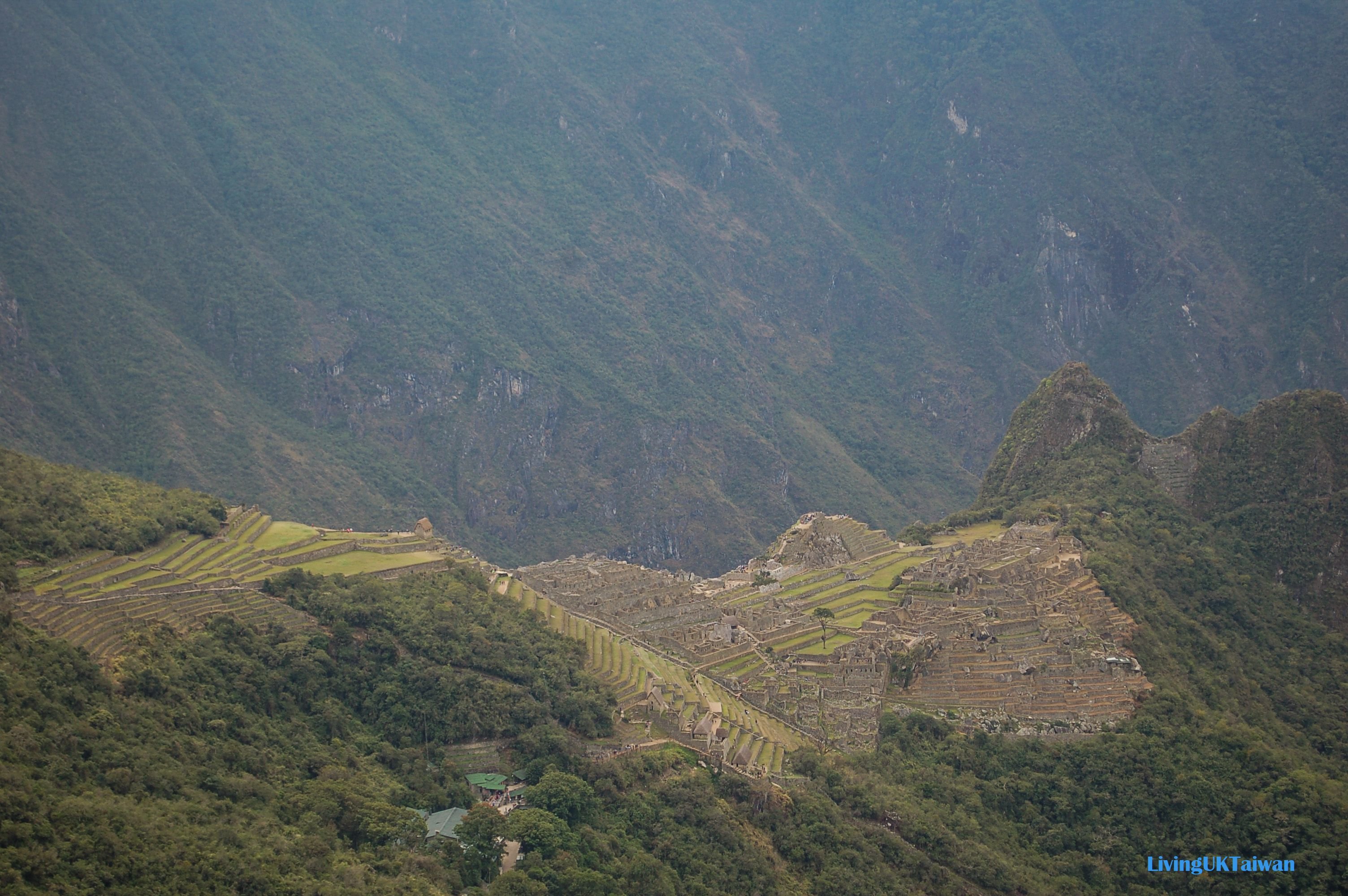
The site is built entirely out of stones some weighing up to 50 tons. There are about 200 structures on the site, and they are divided into an urban versus agricultural area, and an upper and lower town. It is clear that a lot of thought and planning was put into building this city by the Incans. All this is incredible as during the Inca period, there was no written language, no wheels (the boulders were transported either by man or llamas), no iron or steel (hence no strong durable tools to cut the stones), yet they managed to plan and build such a sophisticated city high up in the mountain that has lasted so many years.
整個馬丘比丘用石頭建成,而有些石頭更重達50噸。遺址約有200個建築物,分為市鎮與農業,上下兩個區域,可見當年印加族建造這城市花了不少心思去規劃。另外我覺得非常不可思議的是,當時印加還沒有文字語言,沒有輪子(巨石應該是由人工或駱馬運輸),也沒有鐵或鋼(因此沒有堅固耐用的工具來切割石頭),但他們卻可以規劃和建設一座,可以在高山上歷經多年屹立不倒的城市。
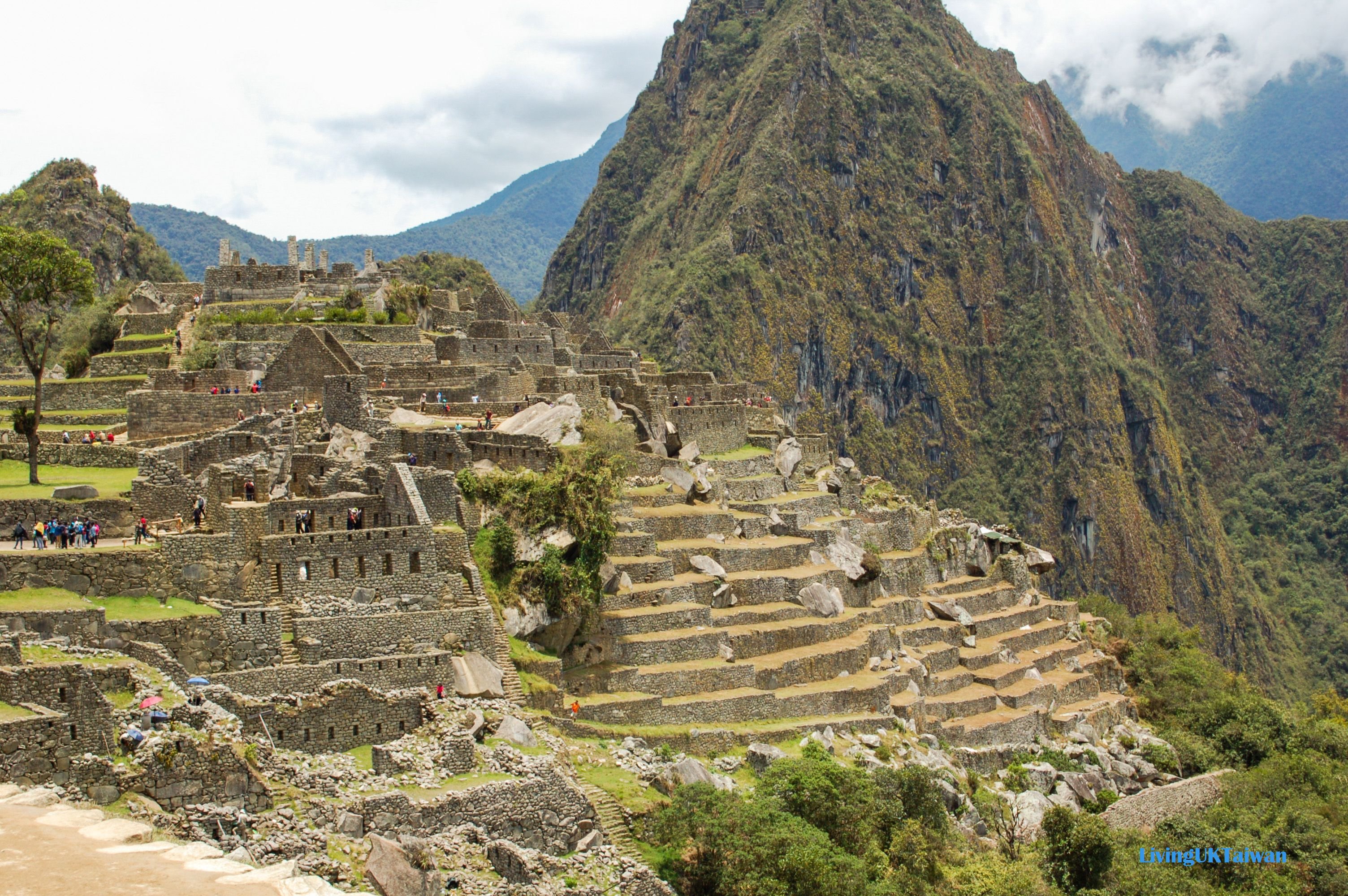
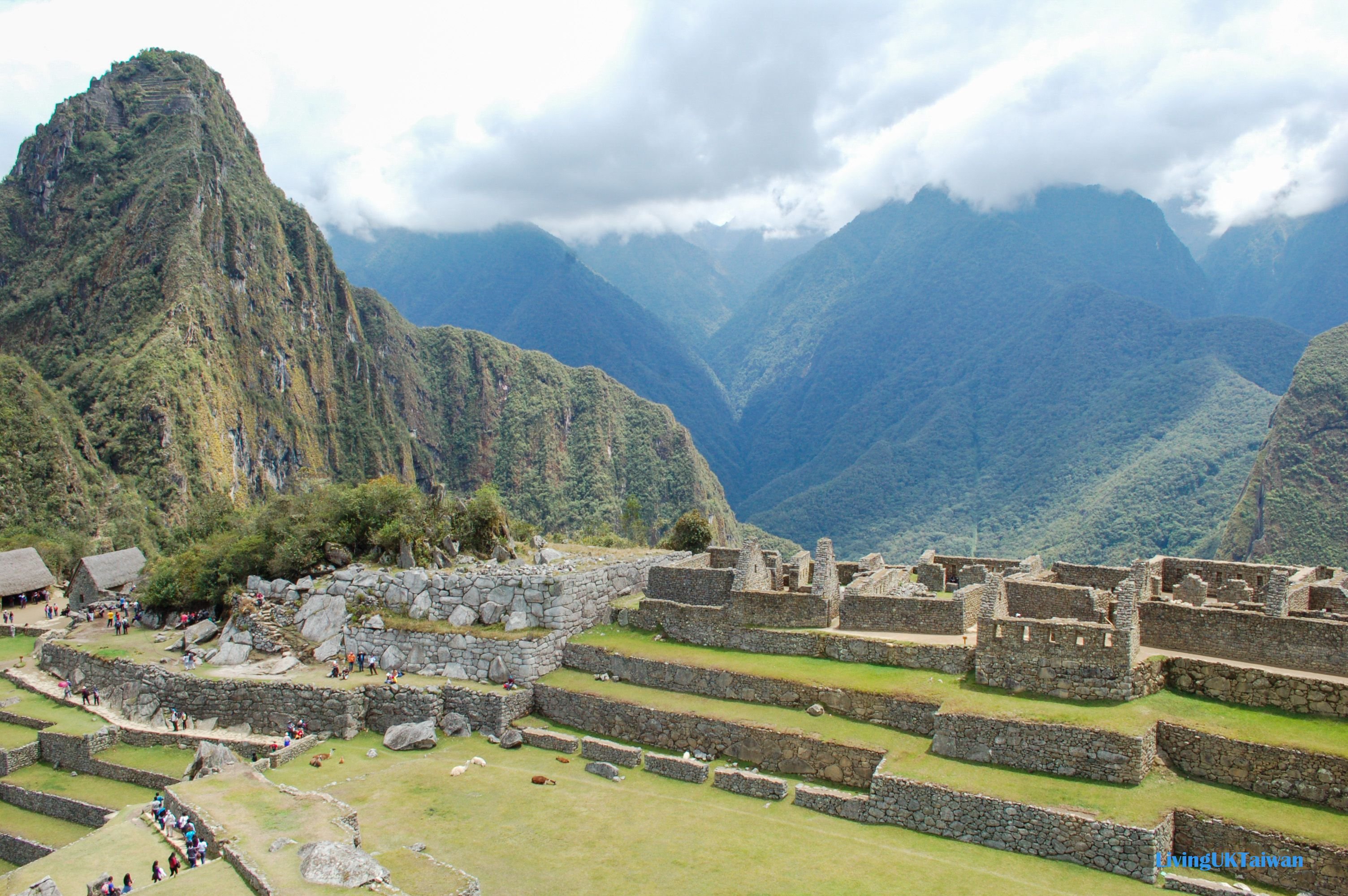
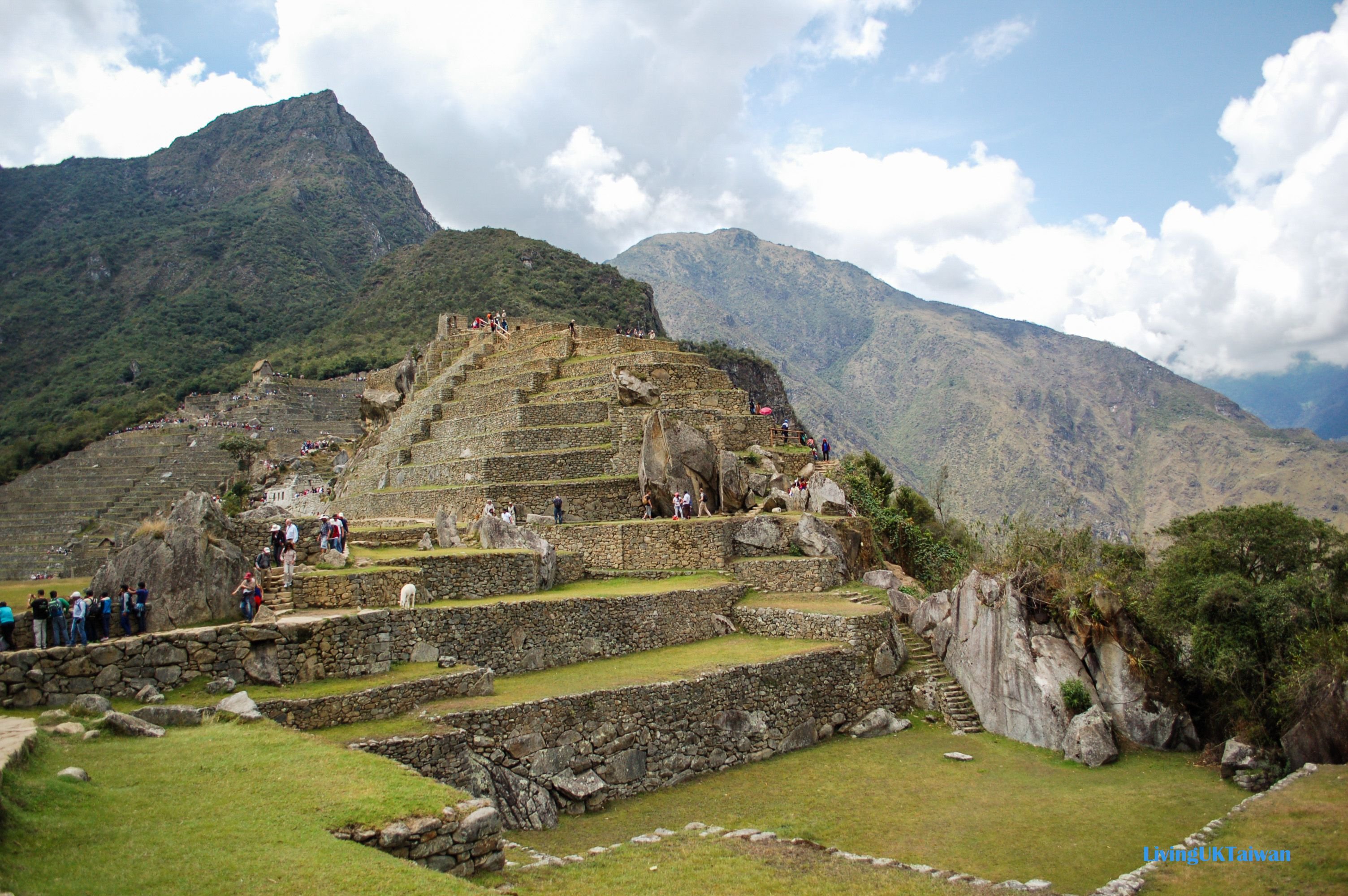
Machu Picchu has around 700 terraces, when I first saw them I can only think of one word "Wow!!" These terraces serves two purposes. First, these stepped agricultural system enables different types of crops to be grown at different levels depending on how much sunlight and water is needed. Second, they prevent landslide. There is a well designed underground drainage system beneath the terraces that is still in use today. The terraces and the drainage system helps to stabilise the soil preventing landslide. Incredible, right?
馬丘比丘有大約700個梯田,我記得第一眼看到時真是令我嘆為觀止,當時的反應只能“哇!” 一聲。這些梯田其實有兩個作用。首先,可以根據各類型的農作物所需要的陽光和水份,安排種在不同層次的梯田上。其次,梯田可防止山泥傾瀉,梯田下有一整套設計完善,至今仍在使用的地下排水系統。梯田和排水系統有助於穩定土壤,防止滑坡。印加人在好幾百年前已懂得這個非常聰明的設計,真是不可思議噢!
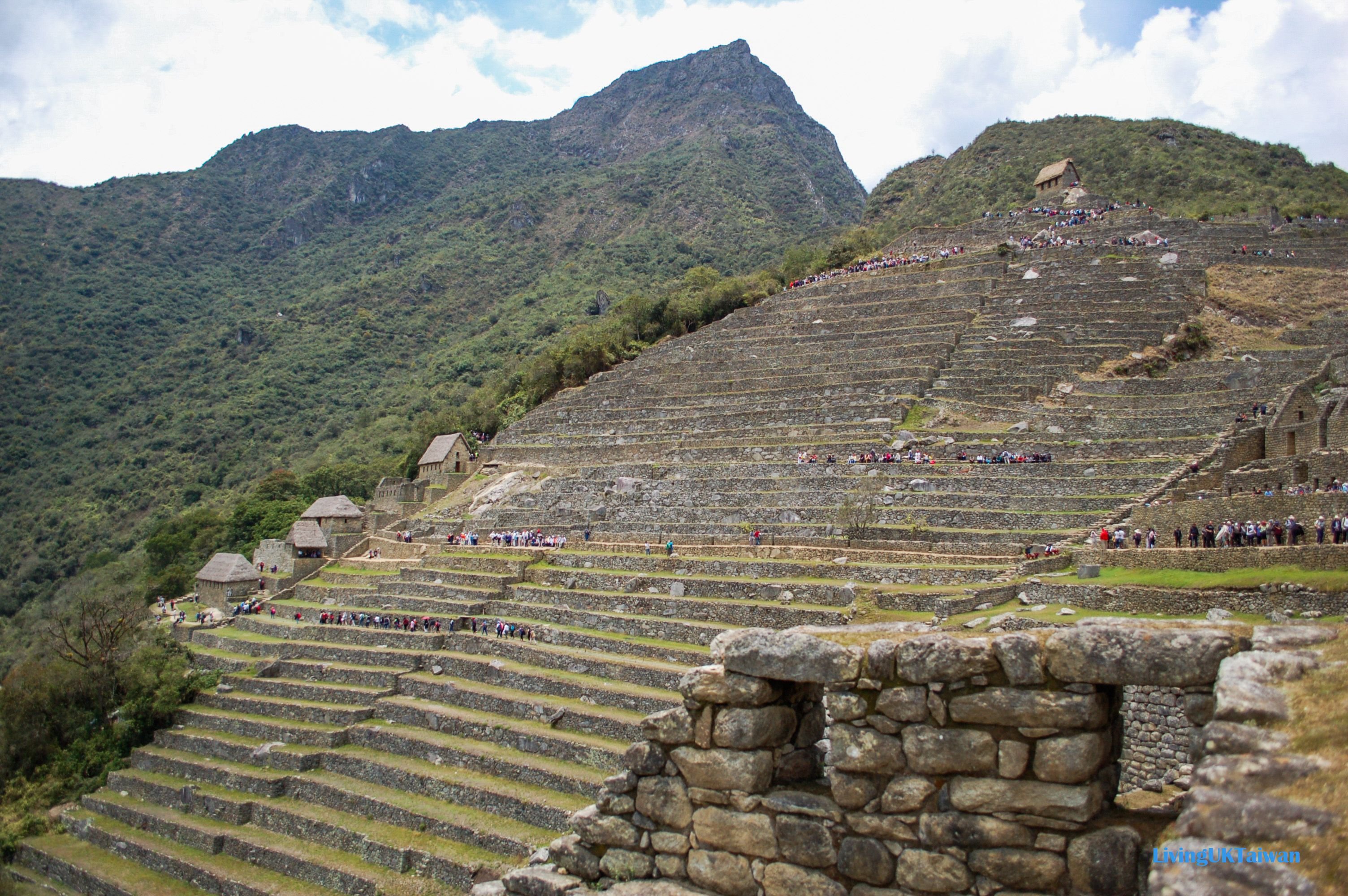
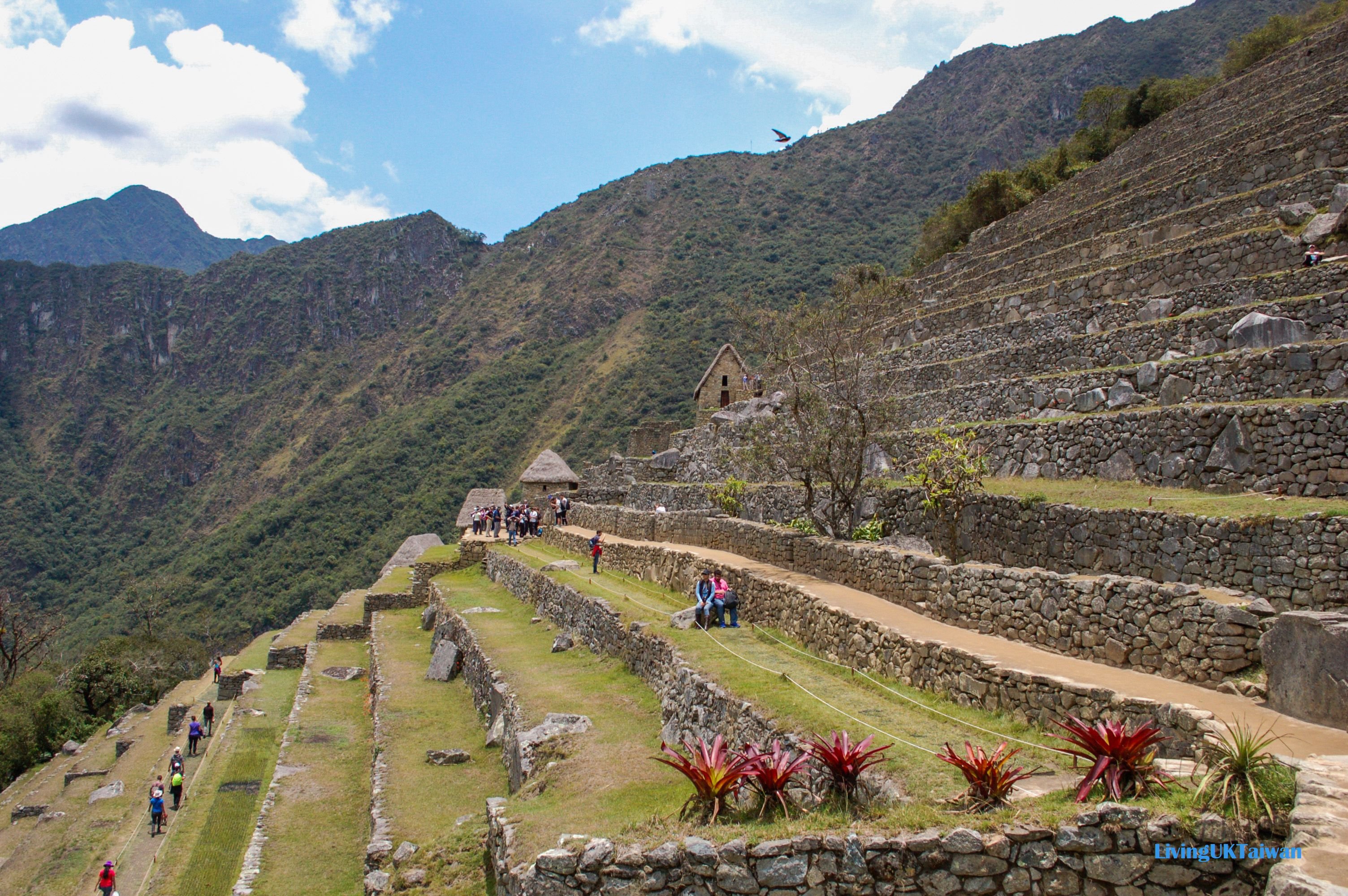
As part of our trek and guided tour, we got a free T-shirt as a memorabilia. It has the route of our trek on the back, which came in really handy when I was writing this post! And here's us doing the promotional photo shoot for the company. Happy to oblige as we had such a great experience!
完成了兩天的旅程,導遊送我們每人一件T-shirt作為紀念。背後有我們的走過的路線圖和經過的景點,對我這次寫的幾篇文章非常有用!導遊要求我們穿上它拍照留念,經過這麼棒的體驗,舉手之勞當然沒所謂!
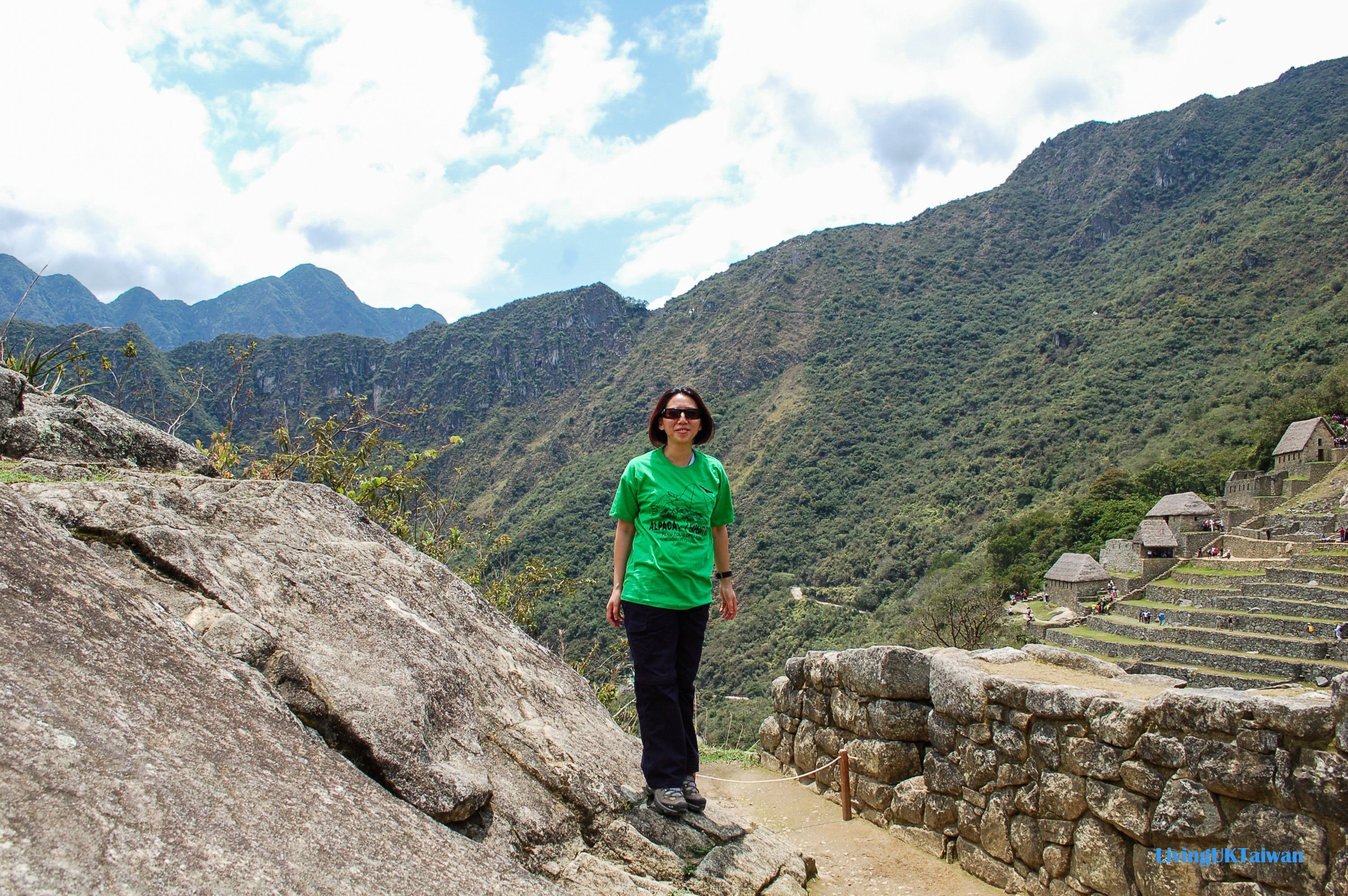
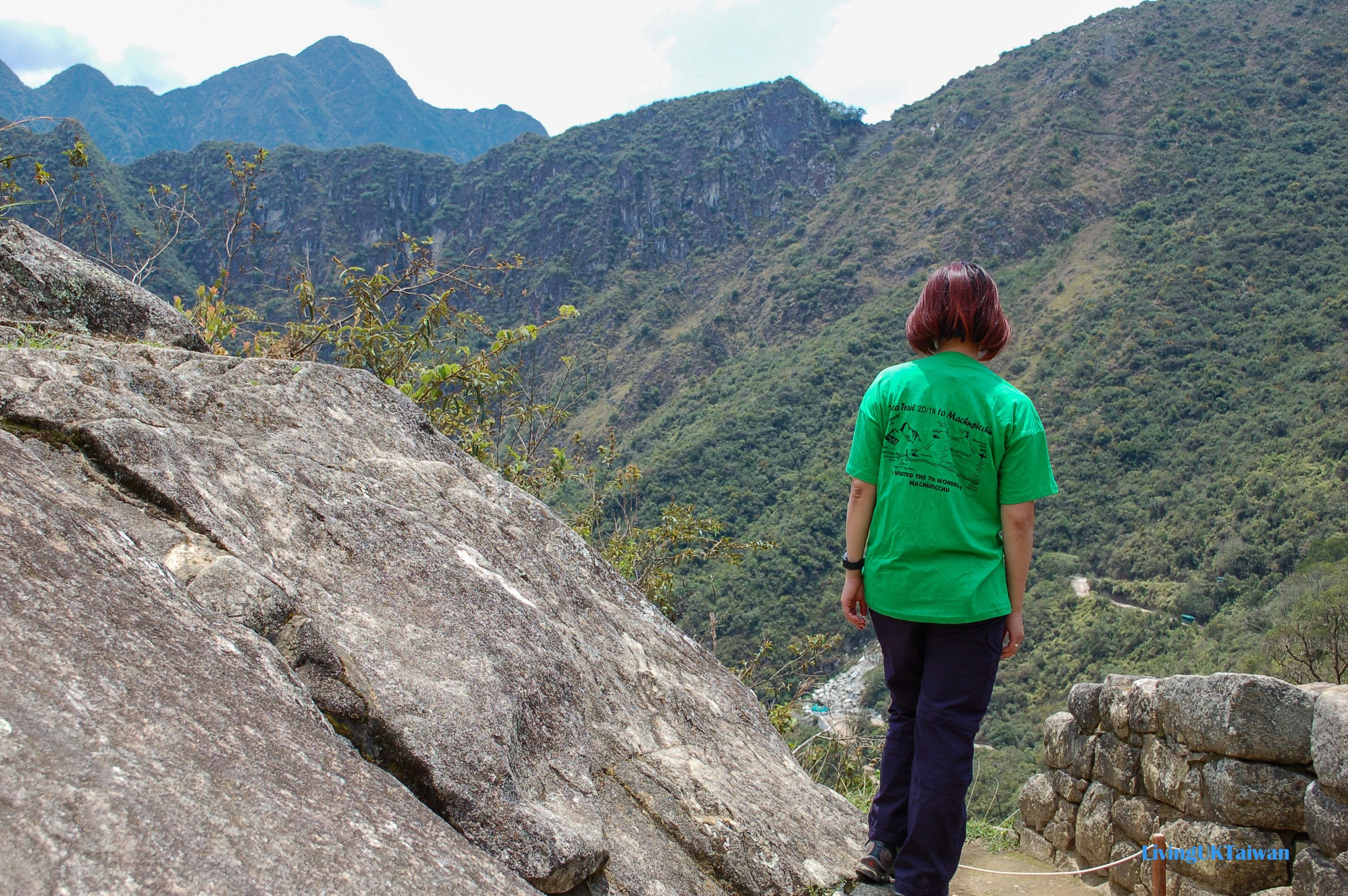
This concludes my Trekking Machu Picchu series. Thanks for reading, I hope you have enjoyed the virtual tour as much as I did actually going there.
感謝您閱讀馬丘比丘之旅系列,希望你喜歡這個虛擬之旅。
Check out all my travel posts here or visit Steemit Worldmap

